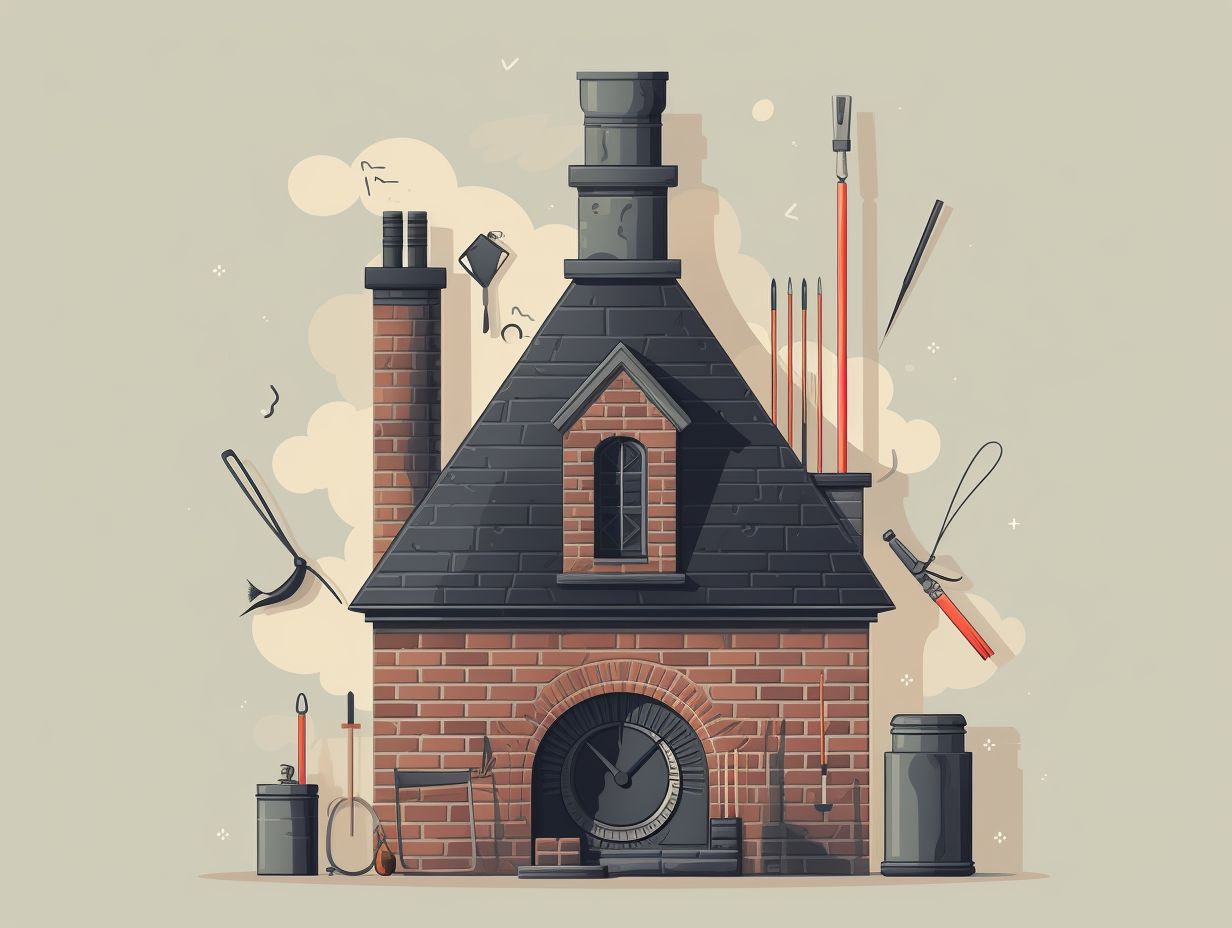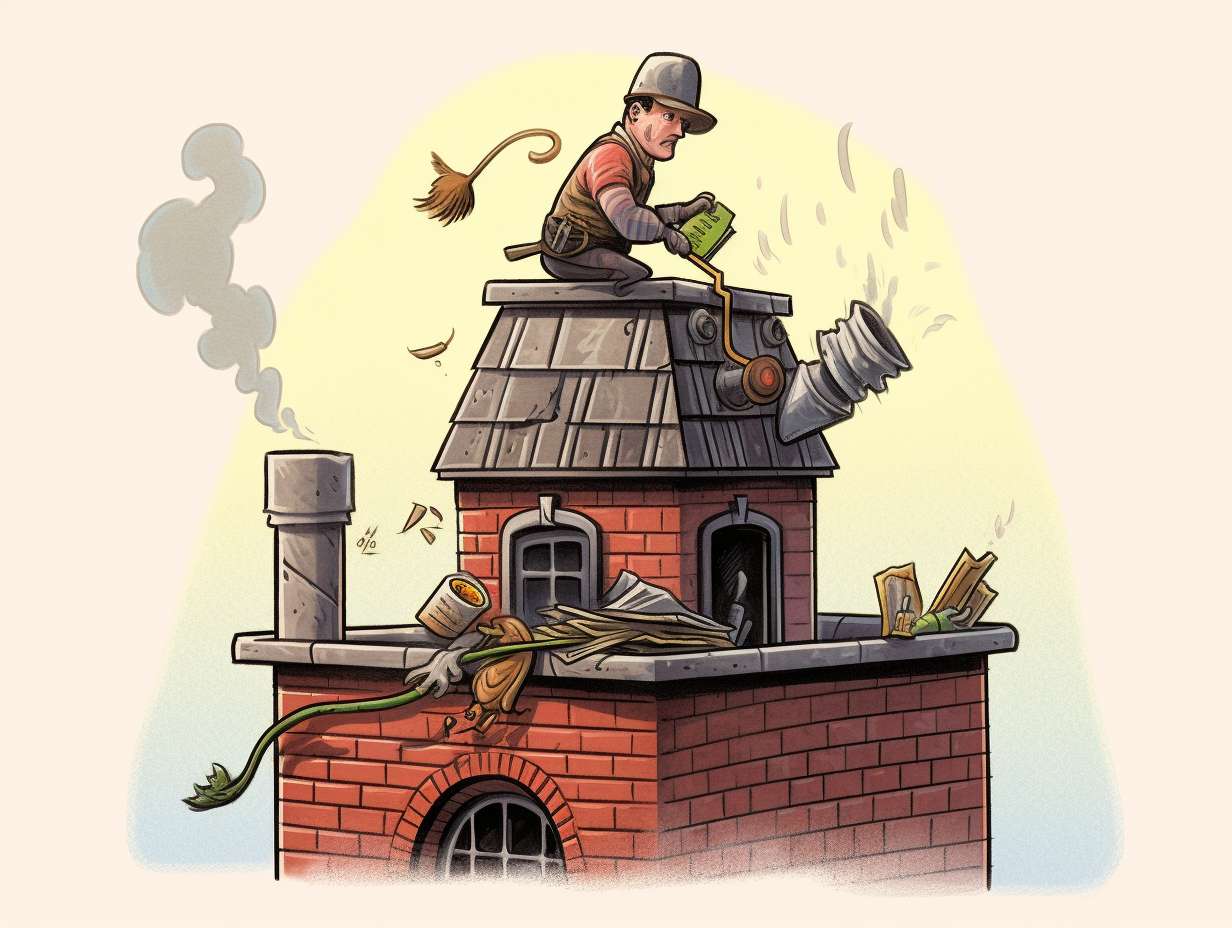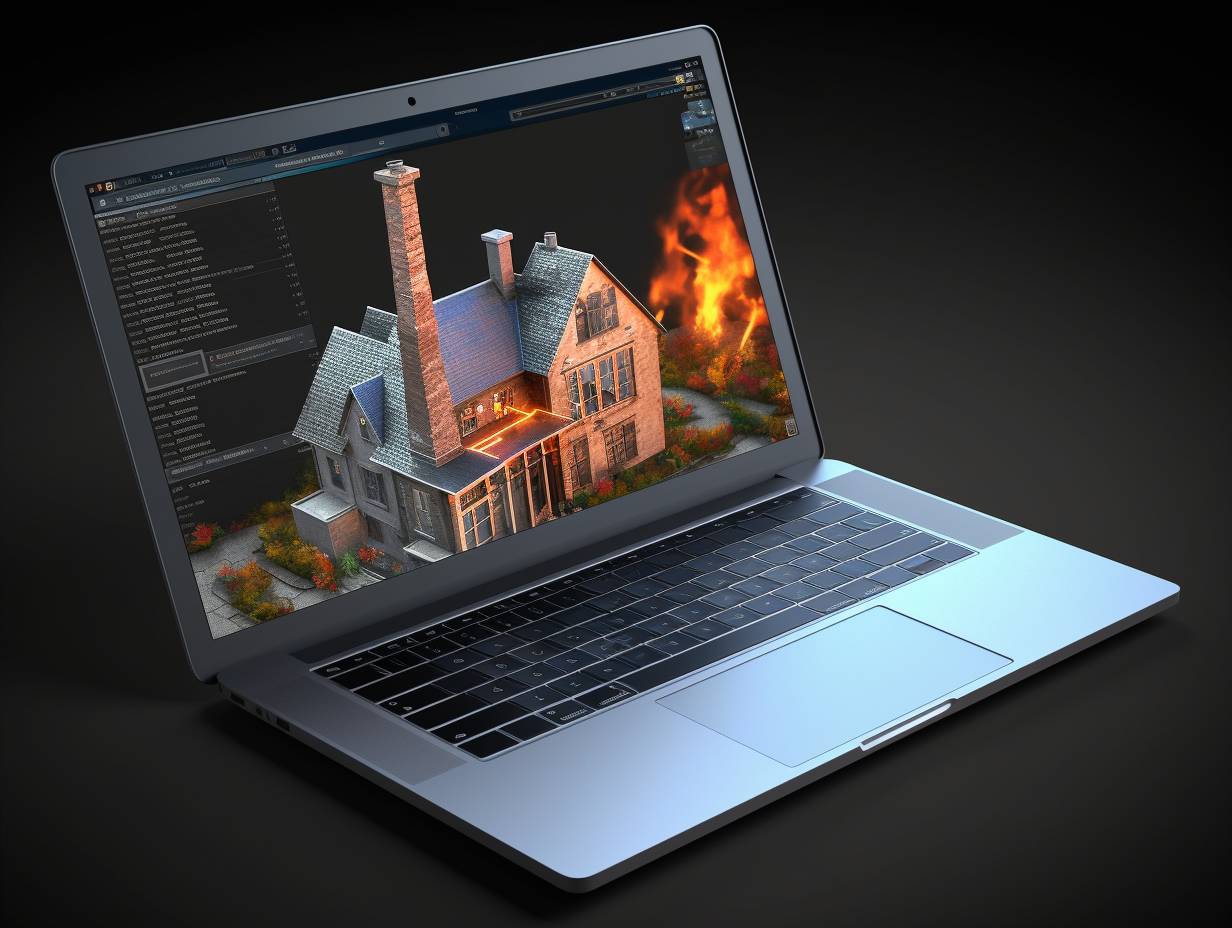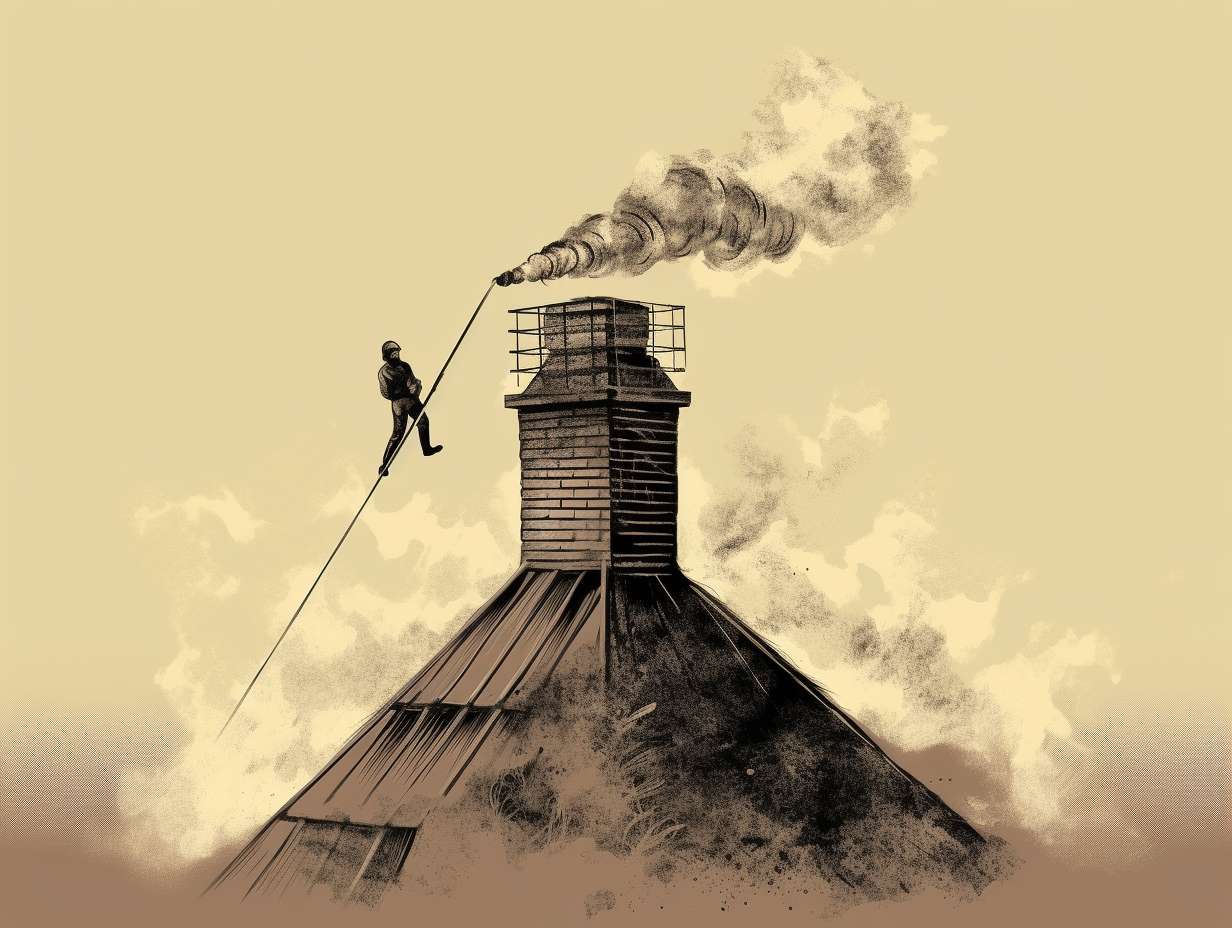
Maintaining Efficiency: Chimney Cap And Damper Cleaning Guide
Table Of Contents
- Understanding the Importance of Chimney Maintenance
- The Role of the Chimney Cap in Maintaining Efficiency
- Signs of a Dirty or Damaged Chimney Cap
- How to Clean Your Chimney Cap
- The Importance of the Damper in Chimney Efficiency
- Signs of a Dirty or Damaged Damper
- How to Clean Your Chimney Damper
- Chimney Cleaning Tools and Supplies
- DIY vs. Professional Chimney Cleaning
- Maintaining a Safe and Efficient Chimney System
- Frequently Asked Questions
- Conclusion

You may not realize it, but your chimney plays a crucial role in maintaining the efficiency of your home’s heating system. But did you know that neglecting to clean and maintain your chimney can lead to decreased efficiency, increased energy costs, and even dangerous fires? That’s why it’s important to understand the importance of chimney maintenance, specifically the roles of the chimney cap and damper.
The chimney cap is a small but mighty component of your chimney system. It sits atop the flue, helping to keep out rain, snow, debris, and animals. When functioning properly, a clean and intact chimney cap can help prevent damage to both your interior fireplace and exterior masonry. On the other hand, a dirty or damaged cap can cause blockages in your flue or allow water damage to occur - leading to costly repairs down the line. In this article, we’ll explore how to recognize signs of a dirty or damaged cap as well as how to clean it for maximum efficiency.
Understanding the Importance of Chimney Maintenance

Don’t let your chimney go neglected - it’s essential to regularly maintain it for safety and peace of mind. One of the most important aspects of chimney maintenance is regular sweeping. Chimney sweeping helps to remove the buildup of creosote, a highly flammable substance that can ignite and cause a dangerous chimney fire. Additionally, regular cleaning ensures that any blockages or obstructions are removed from the chimney, allowing for proper ventilation and preventing harmful gases like carbon monoxide from entering your home.
Regular maintenance also has several benefits beyond just safety concerns. A clean chimney will improve the efficiency of your fireplace or stove, reducing smoke output and increasing heat output. It can also prolong the life of your appliance by preventing damage to components caused by excessive buildup or blockages. Overall, investing in regular maintenance for your chimney is crucial for both safety and efficiency reasons - so don’t neglect it!
The Role of the Chimney Cap in Maintaining Efficiency
You may be surprised to learn that chimney caps can prevent up to 80% of water damage caused by rain and snow. Chimney cap installation is a simple and affordable way to maintain the efficiency of your chimney while protecting your home from costly water damage.
Here are three benefits of chimney caps:
- Prevents Water Damage: As mentioned, chimney caps prevent water from entering your chimney, which can cause damage to the flue liner, bricks, and mortar.
- Blocks Debris: Chimney caps also block debris such as leaves, twigs, and animal nests from entering your chimney. This ensures proper airflow and prevents dangerous blockages.
- Keeps Critters Out: A properly installed chimney cap will keep critters like birds, squirrels, raccoons, and bats out of your home through the chimney opening.
By investing in a quality chimney cap installation, you can ensure that your home remains protected from potential damages while maintaining the efficiency of your fireplace or wood stove.
Signs of a Dirty or Damaged Chimney Cap

If you’ve noticed water stains on your ceiling or walls, it could be a sign that your chimney cap needs to be checked for damage or buildup. A dirty or damaged chimney cap can cause water to seep into your home, which can lead to costly repairs. Chimney cap maintenance is essential to prevent these issues and maintain the efficiency of your chimney.
Regular cleaning and inspections of your chimney cap can help keep it in good condition. If you notice any signs of damage, such as cracks or holes, it may be time for a replacement. Investing in a high-quality chimney cap can save you money in the long run by preventing water damage and maintaining the efficiency of your fireplace or stove. So don’t neglect this important aspect of home maintenance!
How to Clean Your Chimney Cap
Hey there, ready to spruce up your fireplace? Start by clearing out any debris or leaves from your chimney cap using a trusty broom or brush. This is the first step in cleaning your chimney cap and ensuring that it functions properly. Once you have removed the debris, take a closer look at the cap itself to check for any signs of damage.
Cleaning techniques for chimney caps vary depending on the type of material it is made from. For example, if your chimney cap is made of stainless steel, you can use a mild detergent and warm water to clean it thoroughly. On the other hand, if your chimney cap is made of copper, you should avoid using abrasive materials as they can scratch the surface. It’s important to follow manufacturer instructions when cleaning your specific type of chimney cap to avoid damage. Additionally, incorporating regular maintenance schedule for cleaning will ensure optimal function and prevent costly repairs down the road.
| Chimney Cap Material | Cleaning Technique |
|---|---|
| Stainless Steel | Mild Detergent + Warm Water |
| Copper | Avoid Abrasive Materials |
| Galvanized Steel | Wire Brush + Rust-Oleum Spray Paint (if necessary) |
Remember that maintaining your chimney cap isn’t just about keeping it clean - it’s also about making sure that it’s functioning properly so that you can safely enjoy fires in your home!
The Importance of the Damper in Chimney Efficiency

Get ready to learn about a crucial component of your fireplace - the damper and how it can improve your overall heating experience. The damper is responsible for regulating the flow of air and smoke through your chimney. It sits at the top of the flue and controls the amount of heat that escapes through it. Damper operation is essential as it ensures that your chimney works efficiently, which in turn helps you save energy costs.
There are two types of dampers, throat dampers, and top-mount dampers. Throat dampers are located just above your firebox, while top-mount dampers sit atop the flue opening. Top-mount dampers are more efficient than throat dampers because they make a better seal against cold drafts and moisture. Factors affecting damper efficiency include age, wear & tear, rust buildup, exposure to moisture or soot buildup from burning wood. Regular cleaning and maintenance can ensure that your damper operates efficiently throughout its lifespan.
Signs of a Dirty or Damaged Damper
Spotting signs of a dirty or damaged damper is crucial for ensuring your fireplace operates at its best, so let’s take a closer look. Common issues that may arise with dampers include rust, warping and stuck mechanisms. If you notice any of these problems, it’s important to address them before they lead to more serious issues.
If rust is present on your damper, it could be due to water damage or exposure over time. A warped damper can occur from heat damage or misuse of the fireplace itself. Lastly, if the damper won’t open or close properly, it may be due to a buildup of creosote or debris within the chimney flue. Troubleshooting tips for these issues include regular cleaning and maintenance of your chimney cap and damper as well as seeking professional help when necessary. By doing so, you will maintain efficiency in your fireplace and ensure safe use during colder months.
How to Clean Your Chimney Damper

Well, looks like it’s time to give that flue cover a good scrubbing so your fireplace can work its magic this winter. Chimney damper cleaning tips are essential for DIY chimney maintenance, and it’s not as complicated as you think. First, start by preparing the necessary items such as gloves, a mask, a brush, and some cleaning solution. Make sure to choose a cleaning solution that is safe for metal surfaces.
Next, begin by opening the damper and removing any visible debris or dust with a brush. Be careful not to damage the metal surface of the damper while doing this step. Afterward, mix your chosen cleaning solution according to instructions and use it to clean both sides of the damper thoroughly. Rinse off any residue with warm water and let it dry completely before closing it again. By following these simple chimney damper cleaning tips regularly, you’ll ensure that your fireplace will function efficiently throughout the cold season.
Chimney Cleaning Tools and Supplies
If you want to keep your fireplace in top shape, it’s important to have the right tools and supplies for cleaning. A chimney brush should be at the top of your list. These brushes are designed specifically for cleaning chimneys and removing debris and creosote buildup. Be sure to choose a brush that is the correct size for your chimney.
Another essential item to have on hand is a quality creosote remover. This solution helps break down and remove stubborn creosote buildup inside your chimney. Regular use of a creosote remover can help reduce the risk of chimney fires and improve overall efficiency. Don’t forget about regular chimney inspections as well, as catching any issues early on can save you time, money, and potential safety hazards. Follow these maintenance tips along with using proper tools and supplies to ensure a safe and efficient fireplace experience all winter long.
DIY vs. Professional Chimney Cleaning

Now that you have an idea of the tools and supplies needed for chimney cleaning, it’s time to decide whether to do it yourself or hire a professional. Both options have their advantages and disadvantages, so make sure to weigh them carefully before making a decision.
For DIY chimney cleaning, you can save money on labor costs and have more control over the process. However, if you’re not experienced in chimney cleaning, there’s a higher risk of accidents and damage to your chimney. On the other hand, hiring professionals may cost more but provides assurance that the job is done safely and effectively. They also have access to specialized equipment and knowledge on proper disposal of debris. Take note that some insurance companies require professional chimney inspections annually as part of their policy requirements.
To better understand these differences between DIY Chimney Cleaning versus Hiring Professionals, here is a comparison table:
| DIY Chimney Cleaning | Hiring Professionals |
|---|---|
| Lower cost | Higher cost |
| Requires time and effort | Convenient |
| Riskier without proper experience | Safe with trained experts |
| Less efficient without specialized equipment | Access to specialized equipment |
| May not meet insurance requirements for safety inspections | Meets insurance requirements for safety inspections |
Whether you choose DIY or hire professionals for your chimney cleaning needs, be sure to prioritize safety above all else. Ensure that your chosen method complies with local regulations and industry standards while providing sufficient protection for yourself and your property.
Maintaining a Safe and Efficient Chimney System
To keep your home safe and cozy during cold seasons, it’s important to regularly check and maintain your chimney system, just like you would for a car that needs an oil change every few thousand miles. One of the most crucial safety precautions to take is to make sure there are no blockages in the chimney flue. This can cause dangerous gases like carbon monoxide to build up in your home instead of being safely vented outside. Additionally, creosote buildup inside the chimney can also be hazardous as it increases the risk of fire.
Common issues that may affect the efficiency of your chimney include debris buildup, damaged or missing components such as caps or dampers, and improper installation. Regular cleaning and inspection by a professional can help identify these problems early on before they turn into costly repairs or even worse - safety hazards. By taking care of your chimney system on a regular basis, you can ensure that it operates at its maximum effectiveness while keeping you and your family safe from harm.
Frequently Asked Questions
How often should I clean my chimney cap and damper?
To keep your chimney cap and damper in good working condition, clean them at least once a year or more frequently if you notice signs of buildup. Don’t wait until it’s too late to prevent costly repairs.
Can a damaged chimney cap or damper cause a fire hazard?
A damaged chimney cap or damper can pose a serious fire hazard. To ensure chimney safety, prevention measures include regular inspections and repairs by a licensed professional. Don’t take any chances with fire safety.
What are the benefits of hiring a professional chimney cleaner?
If you want to ensure your chimney is safe and functioning properly, hiring a professional cleaner is cost effective. They have the expertise and professionalism to thoroughly clean your chimney, providing numerous benefits for both you and your home.
How do I know if my chimney needs to be cleaned beyond just the cap and damper?
Did you know that a dirty chimney can cause up to 25,000 house fires annually? Signs of chimney buildup include a smoky smell and sooty residue. Regular chimney inspections are crucial to prevent dangerous buildup.
Are there any alternative methods for maintaining chimney efficiency besides cleaning the cap and damper?
If you’re looking for chimney sweep alternatives, there are a few DIY cleaning options. You can use a chimney brush and rod to clean the inside of your chimney or try using a vacuum with an attachment specifically designed for chimneys.
Conclusion
Congratulations! You have successfully learned how to maintain the efficiency of your chimney system with the help of this guide. By regularly cleaning and inspecting your chimney cap and damper, you can ensure that your fireplace is running safely and effectively.
Imagine curling up in front of a warm fire on a cold winter night, knowing that your chimney is free from any blockages or damage. With just a few simple steps, you can make sure that your home stays cozy all season long. So grab those tools and get to work – your chimney will thank you for it!
Disclaimer: Some information is provided through AI. Users should always conduct their own research and consult with qualified professionals before making any decisions.Affiliate information declaration: We may earn revenue from the products referred on this page and participate in affiliate programs.


